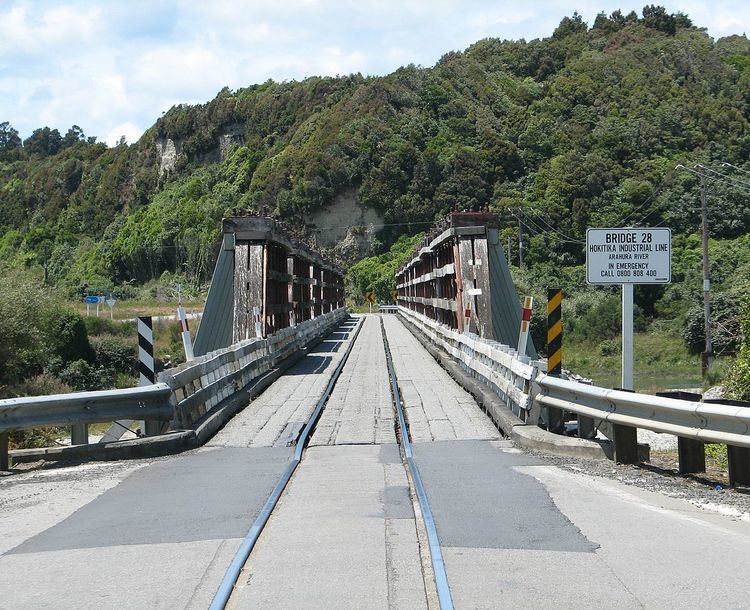 | ||
The bridges in New Zealand are many and varied but only date back to the beginning of European settlement in the mid 19th century.
Contents
Road bridges
Some of the longest bridges on the state highway network are:
Single lane bridges
New Zealand, due to its low traffic density, has had many single lane bridges. Some of those still exist on the state highway network and are criticised by road users. These are progressively replaced with two lane structures. The oldest and one of the longest single lane bridge on the state highway network until December 2011 was the 463-metre Kopu Bridge spanning the Waihou River, this was replaced by a 580-metre, 2 lane structure, which opened to traffic on 12 December 2011.
Viaducts
Rail bridges
There are 1787 bridges on the rail network in New Zealand which are maintained by ONTRACK, the infrastructure arm of the New Zealand Railways Corporation.
Road/rail bridges
There are two bridges on the State Highway on West Coast that have rail lines on the road carriageway. Until 2008 the Awatere River bridge had a rail line above the road way. A new road bridge has been constructed with the railway now being the sole use of the original bridge.
Two bridges on now-closed sections of the East Coast Main Trunk line are still in use by road-traffic only. The single deck Pekatahi Bridge, which spans the Whakatane River near Taneatua carries State Highway Two and the mothballed rails of the ECMT. The rare doublee-deck road-rail bridge at Karangahake Gorge, which crosses the Ohinemuri River, still carries a local road on the lower level, whilst on the upper level, the railway has been replaced by a walkway.
Footbridges
Since there are numerous large rivers in New Zealand many footbridges have been constructed in the backcountry. During the 1950s many bridges were built, along with backcountry huts, to give hunters access to forested areas to cull introduced deer which had by that stage become a serious pest. Some of the bridges still remain but other have been washed away or replaced with new ones and are now often used due to the popularity of tramping (hiking).
Notable bridges
Bridge disasters and incidents
On April 30, during the 1951 New Zealand waterfront dispute a rail bridge was blown up near Huntly. The train drivers were warned in advance and the bombing severely disrupted coal supplies.
Tangiwai disaster
The Tangiwai disaster on 24 December 1953, was the worst rail accident in New Zealand. The rail bridge over the Whangaehu river at Tangiwai had been badly damaged by a lahar from Mount Ruapehu just minutes before a passenger train was due to cross it. 151 of the 285 passengers aboard the train were killed.
The Berrymans' bridge
In 1986 the New Zealand Army built the Te Rata Bridge as a training exercise on a private farm owned by the Berryman family. In 1994 a beekeeper visiting the farm was killed when the bridge collapsed as he drove over it. The incident caused a series of high-profile court cases.
